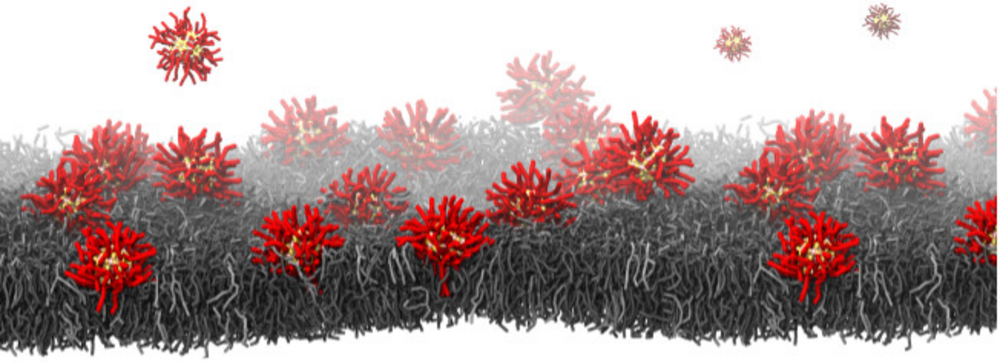Nanoparticles of less than 100 nanometres in size are used to engineer new materials and nanotechnologies across a variety of sectors. Their small size means these particles have a very high surface area to volume ratio and their properties depend strongly on their size, shape and bound molecules. This offers engineers greater flexibility when designing materials that can be used in our everyday lives. Nanoparticles are found in sun creams and cosmetics as well as inside our bodies, as drug delivery vehicles and as contrast agents for pharmaceuticals. Gold nanoparticles are proving to be a next-generation tool in nanoengineering as an effective catalyst at such small dimensions. However, nanomaterials also pose a potential risk, as their interactions with living matter and the environment are not fully understood, meaning that they might not perform as expected, for instance in the human body.
While scientists have been able to fine-tune and engineer the properties of nanoparticles by changing their size, shape, surface chemistry and even physical state, such a variety of possibilities means that dictating precisely how the particles behave at that small scale also becomes extremely difficult. This is of particular concern as we rely on the potential use of nanoparticles within the human body. Gold nanoparticles are good carriers of large and small molecules, making them ideal for transporting drugs to human cells. However, predicting how far they are then absorbed by the cells, their toxicity, is difficult. As is understanding any associated risks to health using these nanomaterials.
A European collaboration of researchers, including scientists from the ILL, Tampere University, University of Helsinki, Norwegian University of Science and Technology, and Université Grenoble Alpes, investigated the physical and chemical influences when gold nanoparticles interact with a model biological membrane, in order to identify the behavioural mechanisms taking place.
About ILL
The Institut Laue-Langevin (ILL) is an international research organisation that is a world leader in Neutron Science. Since its foundation in 1967, the Institute is a shining example of scientific cooperation. Presently 10 European countries (Spain, Switzerland, Austria, Italy, Czech Republic, Sweden, Belgium, Poland and Slovakia) ensure the necessary financial support for the ILL operation under the governance of 3 Associate Member countries: France, Germany and The United Kingdom. The research conducted at the ILL is dedicated to fundamental research (60%) as well as societal challenges research (40%). It covers a wide range of disciplines such as biology, (green) chemistry, materials science, condensed matter physics, as well as nuclear and particle physics.



